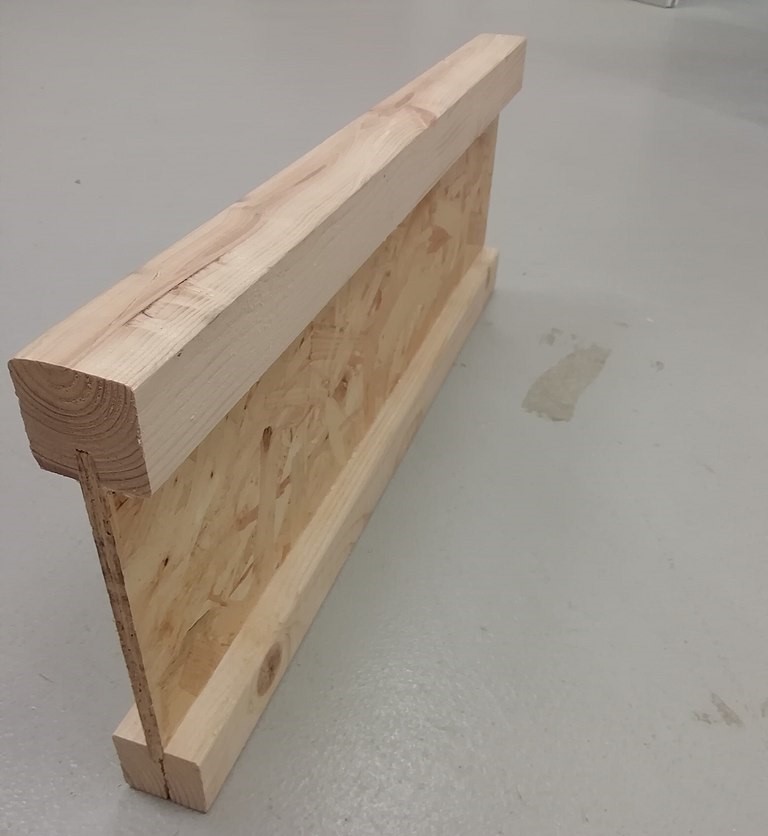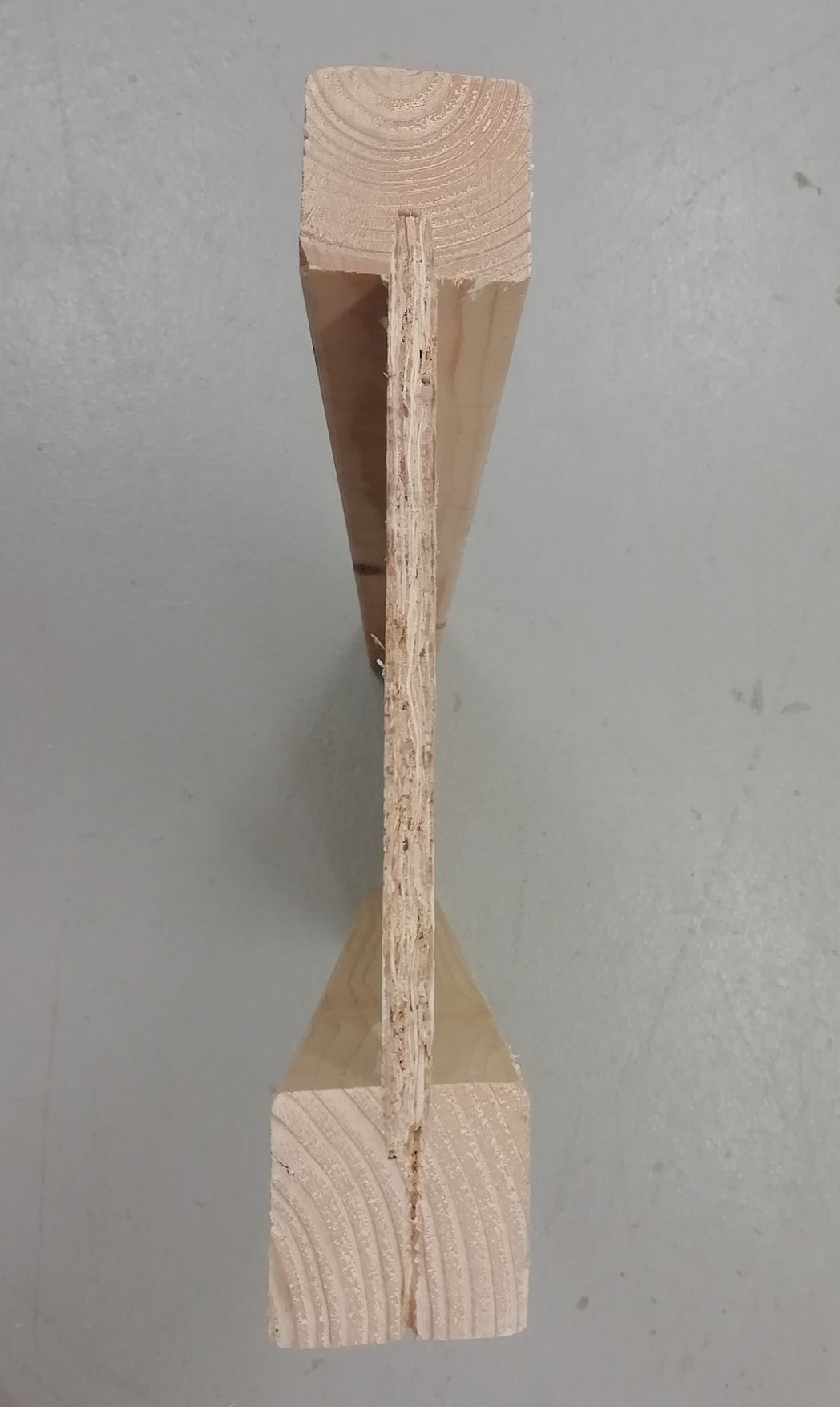Thin webbed joists

|
| This thin webbed joist was made from strength graded timber and oriented strand boards (OSBs). |
Contents |
[edit] Introduction
Engineered wood products and an introduction to timber structural systems, published by the Structural Timber Association, defines a thin webbed joist as: ‘an engineered wood product (EWP) manufactured with flanges made from softwood or laminated veneer lumber (LVL) with glued, thin webs generally made from oriented strand boards (OSBs), fibreboard or plywood. Thin webbed joists can be used to resist either flexural or axial loads or a combination of both.’
[edit] Characteristics
Thin webbed joists are also known as I-joists (or I joists) due to the “I” shape of their cross section.

|
| This cross section illustrates the "I" shape associated with the name, I-joist. |
I-joists are relatively light and have significant strength in relation to their size. They are also generally believed to be easier to handle and are less likely than equivalent solid timber sections to become misshapen or to split.
The Code of Practice for Engineered Wood Products published by the Engineered Wood Products Committee of the UK Timber Frame Association, states that I-joists “are made using a continuous process in lengths up to 20m and are cut to the desired length either in a factory prior to delivery or on site. The flanges have a pre-formed rout into which the bevelled web section is glued using an adhesive that has been approved for structural purposes (meaning they should either comply with Type I specification as defined in BS EN 301 or should be an equivalent strength and durability as verified by independent third party assessment and certification).’
Service runs for mechanical and electrical infrastructure can sometimes be installed in conjuntion with I-joists and can help reduce the likelihood of squeaky floors.
They can be used with several applications, including:
- Floor and roof joists (however, open web joists also known as metal web joists are sometimes preferred over thin webbed joists for these applications).
- Formwork.
- Ceilings.
- Loadbearing studs.
- Cladding support.
- Prefabricated cassette floors.
[edit] Related articles on Designing Buildings
- Engineered wood rim board.
- Joist.
- Metal web joists.
- Timber post and beam construction.
- Timber engineered structural frames.
- Types of flooring.
[edit] External resources
- Engineered Wood Products Committee, UK Timber Frame Association, The Code of Practice for Engineered Wood Products.
- Structural Timber Association, Engineered wood products and an introduction to timber structural systems.
Featured articles and news
The Building Safety Forum at the Installershow 2025
With speakers confirmed for 24 June as part of Building Safety Week.
The UK’s largest air pollution campaign.
Future Homes Standard, now includes solar, but what else?
Will the new standard, due to in the Autumn, go far enough in terms of performance ?
BSRIA Briefing: Cleaner Air, Better tomorrow
A look back at issues relating to inside and outside air quality, discussed during the BSRIA briefing in 2023.
Restoring Abbotsford's hothouse
Bringing the writer Walter Scott's garden to life.
Reflections on the spending review with CIAT.
Retired firefighter cycles world to raise Grenfell funds
Leaving on 14 June 2025 Stephen will raise money for youth and schools through the Grenfell Foundation.
Key points for construction at a glance with industry reactions.
Functionality, visibility and sustainability
The simpler approach to specification.
Architects, architecture, buildings, and inspiration in film
The close ties between makers and the movies, with our long list of suggested viewing.
SELECT three-point plan for action issued to MSPs
Call for Scottish regulation, green skills and recognition of electrotechnical industry as part of a manifesto for Scottish Parliamentary elections.
UCEM becomes the University of the Built Environment
Major milestone in its 106-year history, follows recent merger with London School of Architecture (LSE).
Professional practical experience for Architects in training
The long process to transform the nature of education and professional practical experience in the Architecture profession following recent reports.
A people-first approach to retrofit
Moving away from the destructive paradigm of fabric-first.
International Electrician Day, 10 June 2025
Celebrating the role of electrical engineers from André-Marie Amperè, today and for the future.
New guide for clients launched at Houses of Parliament
'There has never been a more important time for clients to step up and ...ask the right questions'
The impact of recycled slate tiles
Innovation across the decades.
EPC changes for existing buildings
Changes and their context as the new RdSAP methodology comes into use from 15 June.
























